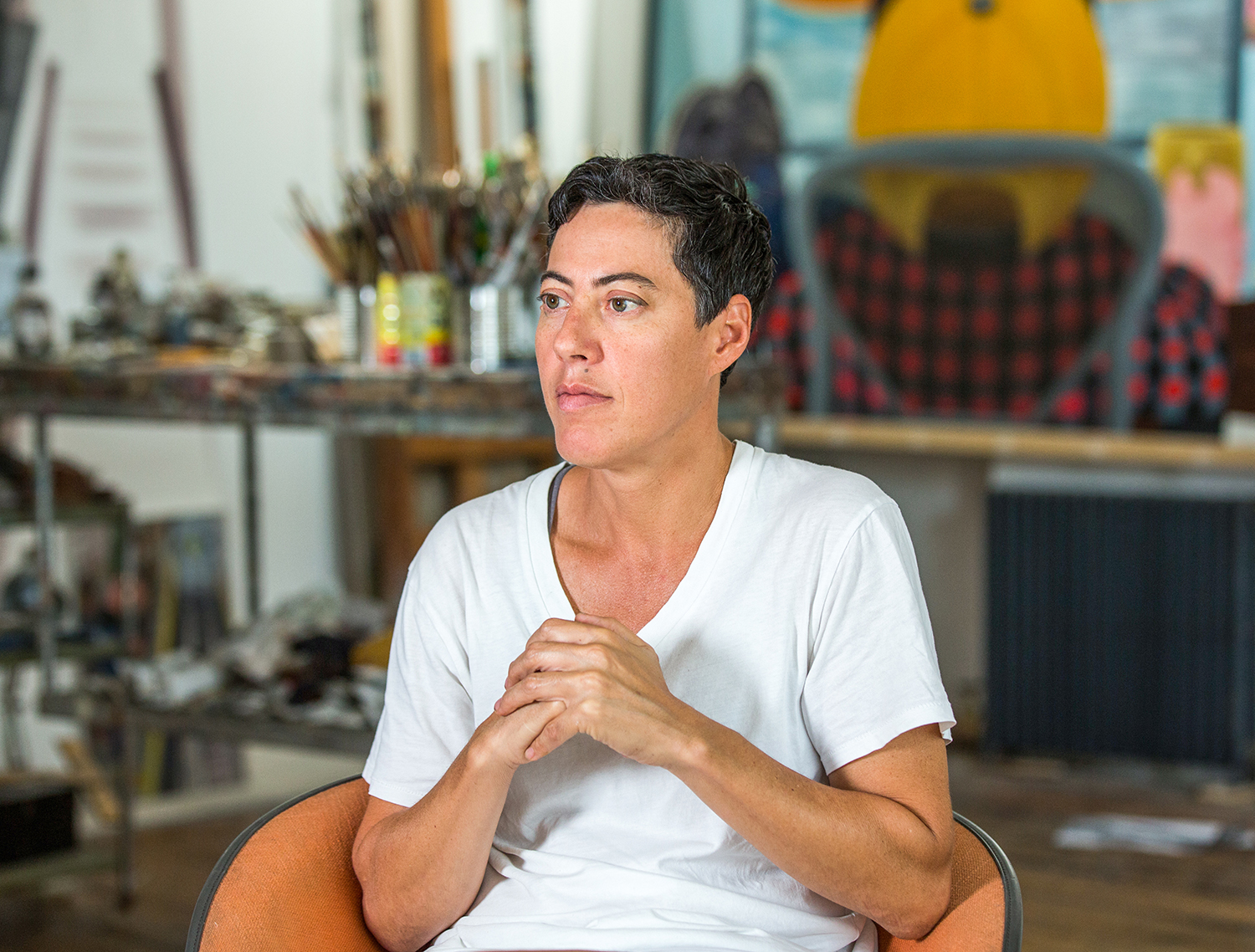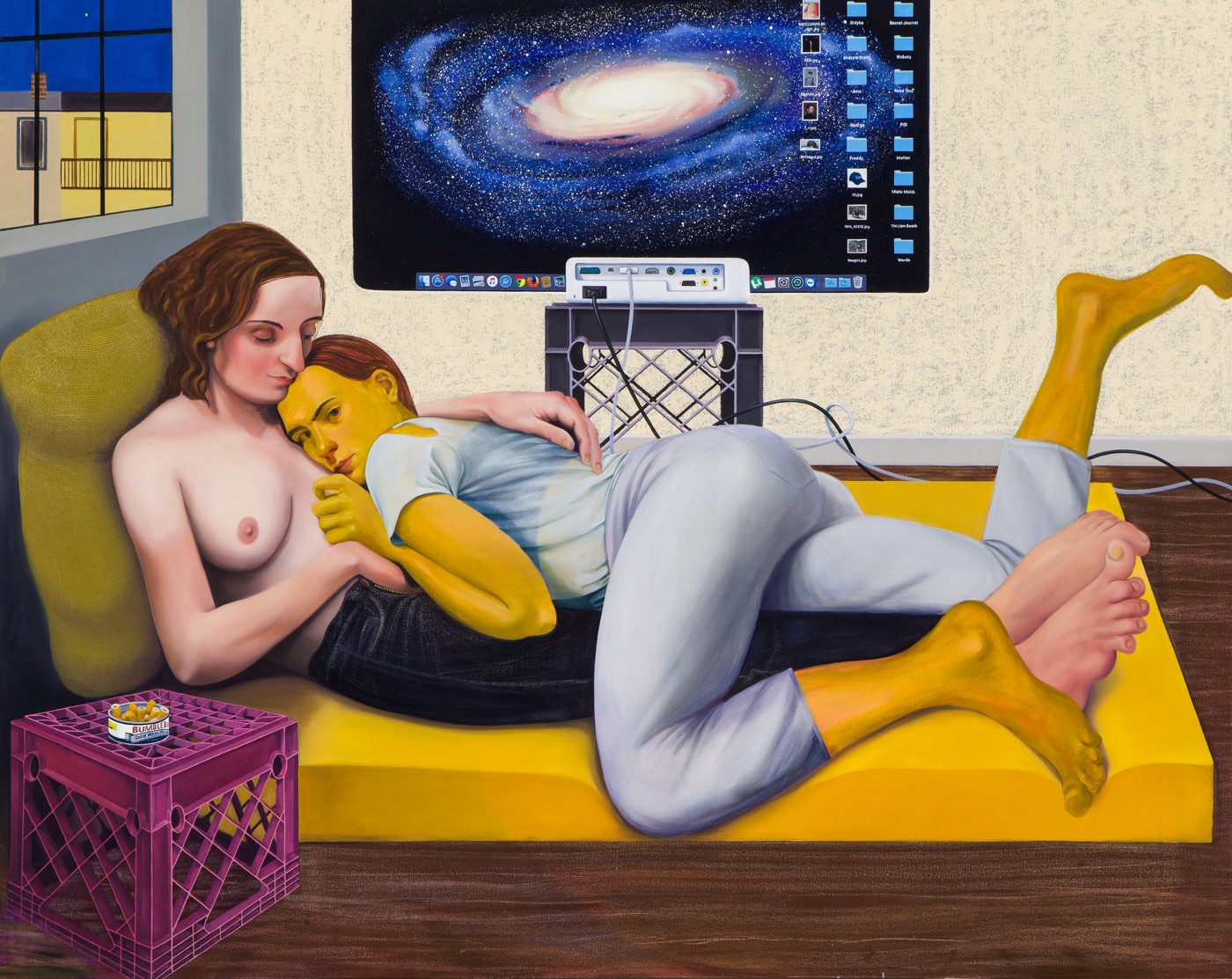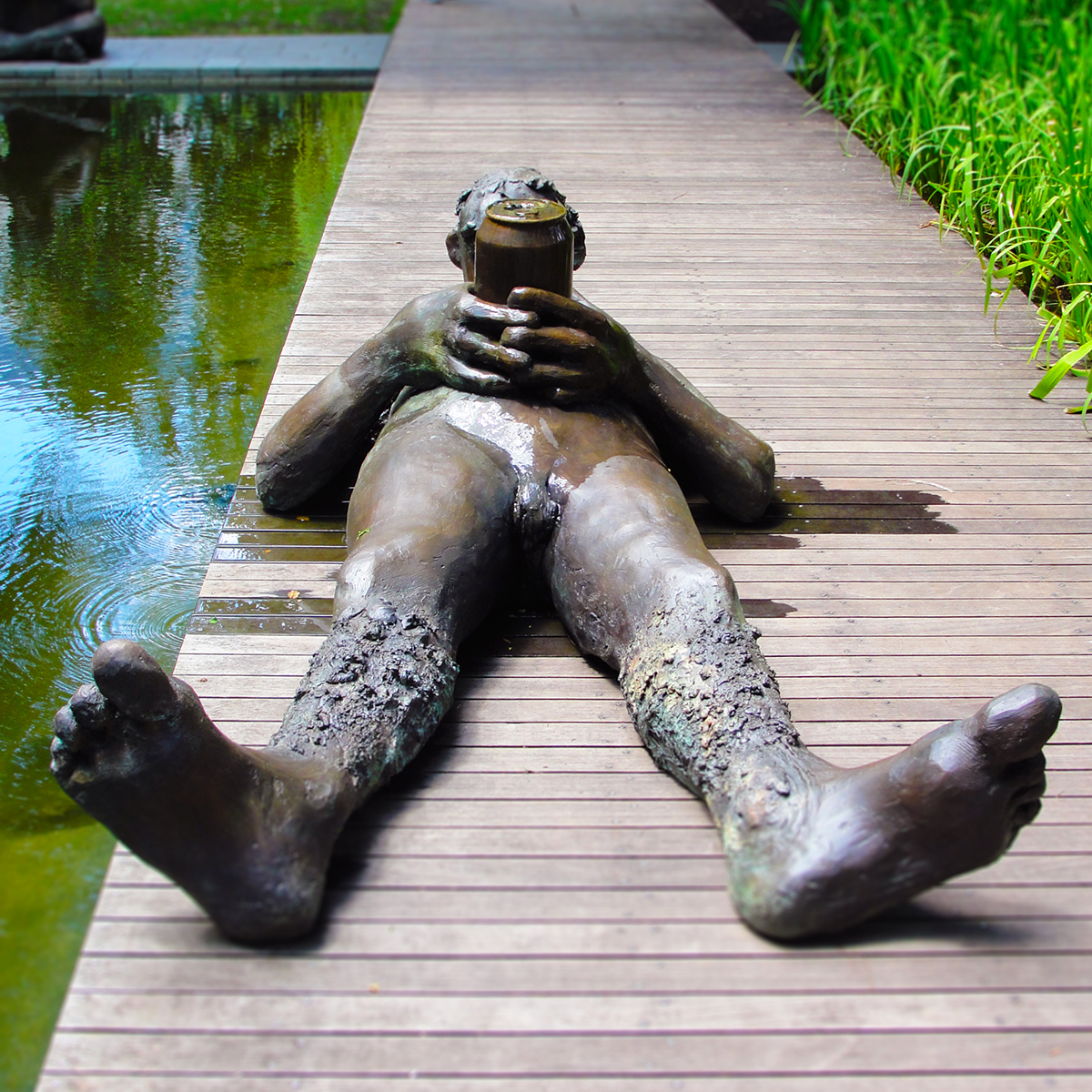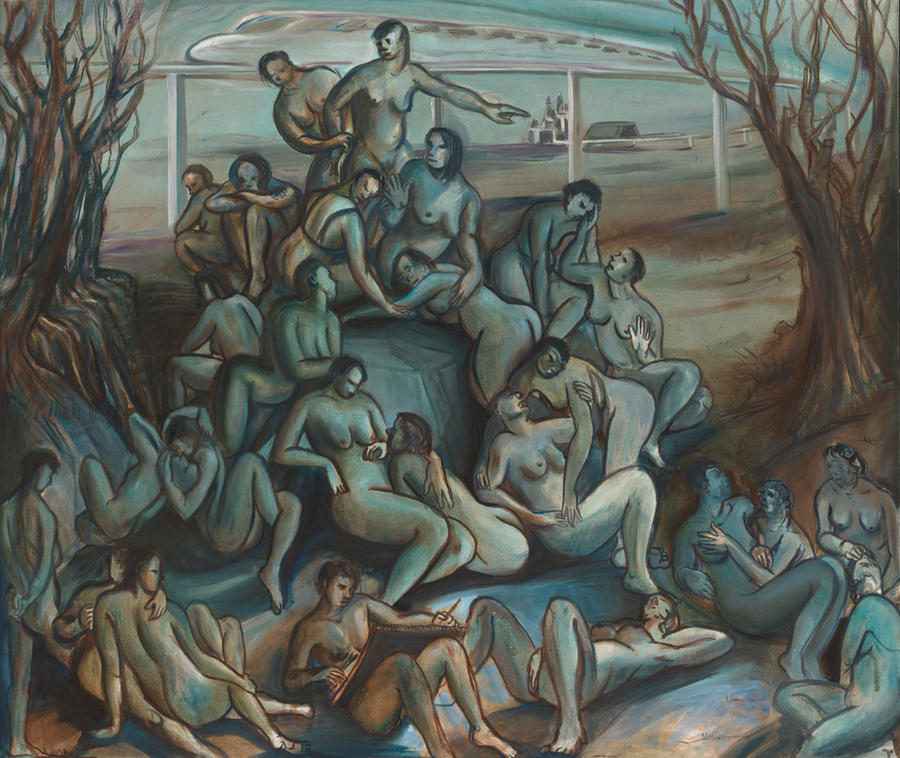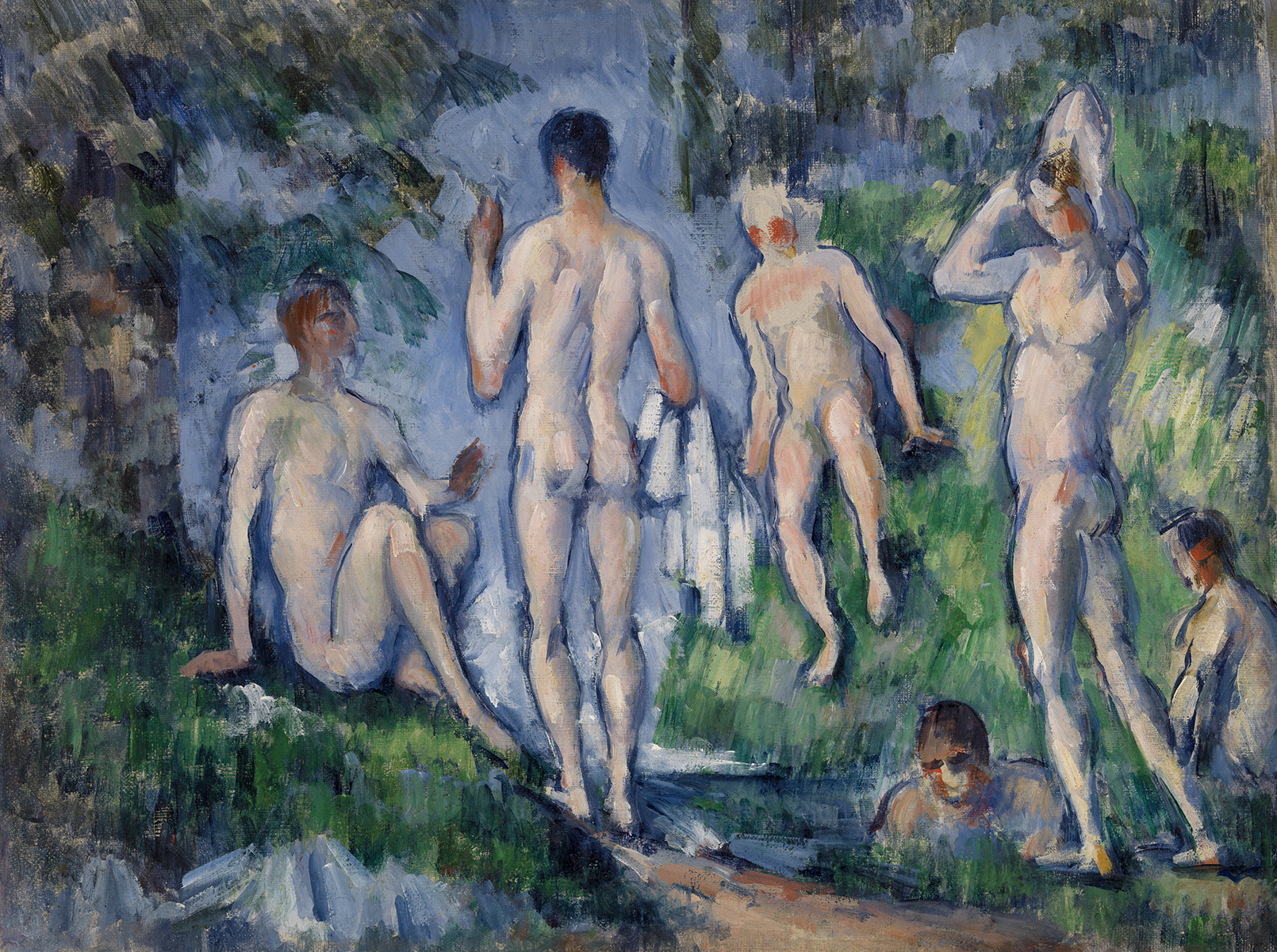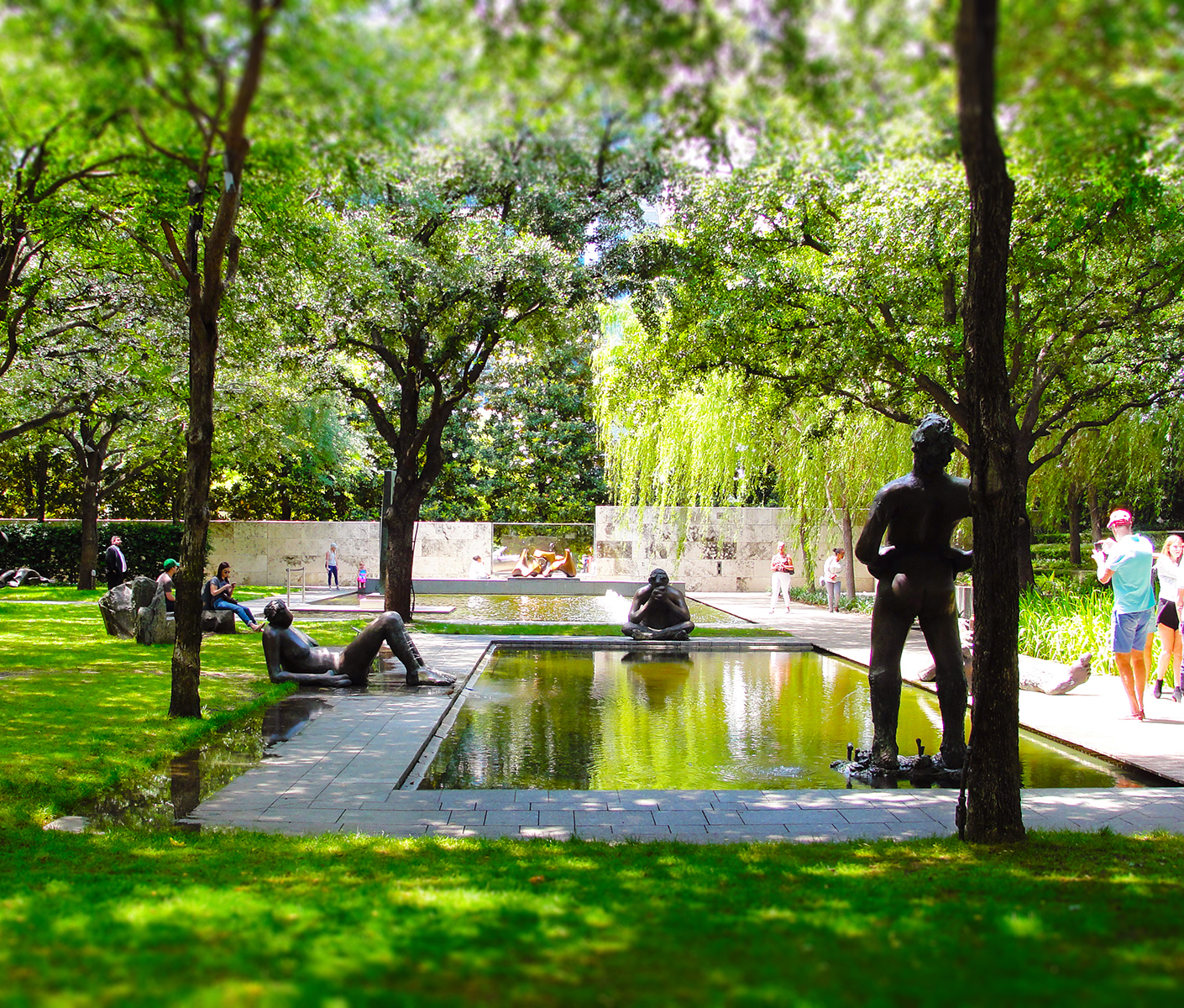Nicole Eisenman’s gender-fluid Sketch for a Fountain

Exploring Nicole Eisenman’s Sketch for a Fountain, a monument of gender-fluid deities.
Cover Photo: Sketch for a Fountain, bronze, detail, by Nicole Eisenman, Nasher Sculpture Center, Dallas, Texas, USA (conceived 2017 and cast 2018–19).
This article is part of my 30 Living Queer Artists Worth Celebrating in 2019 series. June is Pride Month, commemorating the international gay rights movement that began June 28th, 1969, with the Stonewall riots of New York. 2019 marks the 50th anniversary of the event. I’m celebrating all month long!
It’s Dallas Pride weekend and today is also the first Saturday of the month, meaning the Nasher Sculpture Center is free to enter! It’s the perfect day to see (or at least read about) Eisenman’s gender-fluid sculptural installation Sketch for a Fountain!
WARNING: The following article features and/or discusses graphic nudity, pornography, homoerotica, and oral sex.
Fountain
Five nude figures lounge around a pool. One sits, legs crisscrossed, with head on hands, appearing to be deep in thought. Another lays on a wooden walkway, holding an unmarked can, while soaking in the midday sun. A third lays opposite, torso upright. A fourth stands tall with hands on hips, perhaps in laughter. Another appears to be sleeping in the grass, in an unconscious bliss. This installation, is Sketch for a Fountain by Nicole Eisenman, the newest addition to the Nasher Sculpture Center’s garden.
Nicole Eisenman
Nicole Eisenman is a Jewish lesbian feminist artist. She was born in France but has lived most of her life in New York, where she established her career. Eisenman rose to prominence in the mid 90s by combining the absurd with the banal and imbuing quotidian scenes with socio-political importance. Her work has been described as witty, satirical, and overtly queer (in a 2014 painting, Is It So, Eisenman depicts lesbian cunnilingus).
Eisenman’s father is a Freudian psychiatrist and she grew up listening to him interpret dreams. This is quite evident in the surreal nature of her work. Eisenman has flirted with a variety of styles but her paintings have remained grounded in her personality and vision.
Sketch for a Fountain is whimsical. The sculptures are large, each about 1.5 times life-size. The figures seem like they’re of a different species, mighty and grand. Eisenman has described the creations as “scruffy, bohemian great-great-grandchildren of [Greco-Roman] gods.”
The proportions are especially intriguing. Eisenman endows the sculptures with large hands and bulbous fingers and noses. A small slug sits on the back of the standing figure, spitting a gentle mist. The playfulness reminds me of Quentin Blake, best known as the illustrator of Roald Dahl’s books.
Eisenman returned to sculpture around 2011. Curator Hendrick Bündge noted, “[Eisenman] said she always envied all the sculptural materials and tools when she went to art supplies stores”. The transition appears easy for Eisenman, who has long deemed texture an important aspect of her work, explaining “To me, what carries the emotional content in paint is not the image; it’s really the texture. Texture is sculptural, and it’s a very primal experience.”
Eisenman’s history of painting is evident in the rough manner in which she approaches the details of the figures. Heads and legs are covered in a texture reminiscent of coral, perhaps meant to resemble hair, that appears plastered on and removed by the likes of a palette knife.
The sculptures are faceless, anonymous, and even gender-fluid. Anyone can project themselves onto the figures. “He’s got a beer out!” I heard a nearby man exclaim. There’s no way to be sure what it is (I imagine it’s a Coke) or who.
Eisenman notes her sculptures have similarities with figures in her paintings. “They have the same clunky, unattractive, but also heroic body type, and they’re a kind of all-inclusive gender state,” she says. The figures lack a defined muscularity and they could even be described as gelatinous. The figures are not idealized, sexualized, or ashamed as could perhaps be imagined in such a setting.
Nudity and Bathing
Nudity in Western art became popular during the Renaissance, following the rediscovery of Greco-Roman classical art. Still, nude art required a divine or mythological pretext due to Christian moral restrictions. The first male nude since antiquity, David, was made by queer artist Michelangelo in Florence and, following unveiling in 1504, it was modestly covered by a garland of bronze fig leaves, at least until the mid-16th century.
It cannot be ignored that nudity was often imbued with a sexist male gaze as art was created almost exclusively by male artists for almost exclusively male patrons. The Greek goddess Diana caught bathing by Actaeon was a favorite subject as it combined the necessary mythological divinity with themes of vulnerability, eroticism, and voyeurism.
Bathing in general became a popular subject as it presents a variety of opportunities for an artist to showcase their skills. Bathing scenes are often complex combinations of landscape, portraiture, still-life, anatomy, and movement.
The pretext of divinity was finally removed in 1863 by Édouard Manet’s controversial The Luncheon on the Grass, originally titled The Bath; a commonplace woman sits nude and unabashed, contrasting the fully-dressed men, devoid of shame or even flirtation as she stares defiantly at the viewer (Manet repeated the gaze in Olympia, a portrait of a prostitute). In today’s context, The Luncheon on the Grass, though painted by a man, can be considered a feminist shift in art.
Secular nudity has since become associated with liberation. Certainly, any artworks depicting nudity that followed Manet, were devoid of puritanical shame. Notice the casual titular bathers in Paul Cézanne’s painting, circa 1892, such a mundane scene would have been unimaginable during the Renaissance.
After centuries of representations of the nude body, one would imagine that there is nothing interesting left to explore but Eisenman proves that is not the case.
Gender and Body
The Biblical tale of Adam and Eve, having tasted the fruit of knowledge and being subsequently expelled from Eden, is the Western origin of the dichotomy of the sexes, heterosexuality, body-consciousness, and shame.
All these notions are rejected in Eisenman’s Sketch for a Fountain. The figures are whimsical, unabashed, and avoid strict definitions of gender. Eisenman explains, “Your work always reflects you. You can’t really deny it.” Eisenman herself identifies as gender fluid, and she has a long history of depicting androgynous characters.
In another interview, she adds, “Being a queer woman is the air that I breathe, and it’s inescapable, and it’s going to be part of the work. But I would like gender to just disappear from the face of the earth.”
The gender fluid androgynous figures of Sketch for a Fountain sit, stand, and lay squarely in the modern zeitgeist. A mainstream conversation about gender and sex began in 2015 when Olympian athlete Bruce Jenner came out as transgender; this was followed by a national debate surrounding the rights of trans people and their use of bathrooms. Trans adults account for just 0.6% of the U.S. population, an infinitesimal minority, but the number has doubled from 0.3% just ten years ago. Recently, another athlete, South African runner Caster Semenya who was born female but with high levels of testosterone, has raised further questions about definitions of sex.
Gender is not the same as sex. Feminist theory explains that gender is a purely social construct. Certainly nothing in nature demands girls wear dresses and boys wear pants. It was German leader Adolf Hitler who established pink as a feminine color as, under his direction, NAZIs used a pink triangle to label homosexuals put in concentration camps.
In Sketch for a Fountain, Eisenman’s resting figure appears to be paying homage to the Sleeping Hermaphrodite from antiquity. In an interview with the New York Times, Eisenman explained, “I believe in the radicality of stretching the definition of what “she” is.”
Described by ancient Roman poet Ovid, in Metamorphosis, Hermaphodite was the son of Hermes and Aphrodite. The female nymph Salmacis became infatuated with his beauty but was rejected. She begged Zeus to merge their bodies and they became one intersex being.
“I believe in the radicality of stretching the definition of what “she” is.”
The work was a popular sculptural subject. At least nine copies of Sleeping Hermaphroditus have survived from antiquity. At the time, however, the sculpture was likely intended as a practical joke: one side appearing as a beautiful woman, and the other side revealing the male genitalia. According to curator Carlos Picón, intersex people were considered bad omens and children with ambiguous genitals were often killed.
The Hermaphrodite has continued to pique interest. In 1620, cardinal and art patron, Schipione Borghese commissioned David Larique to restore his copy and the famous Gianlorenzo Bernini to sculpt a mattress for the resting nude. More recently, the Sleeping Hermaphrodite was 3D scanned and recreated by Barry X Ball in gorgeous black marble which sold for $545,000.
Beauty is subjective and, historically, it is artists like Eisenman who have been tasked with defining and capturing beauty in their time and culture. Today, there is a growing interest in androgyny and gender-fluidity.
Retailers have unveiled unisex clothing lines. This year, Chanel released a make-up line for men, Boy de Chanel. In 2017 a new Chinese boy-band FFC-Acrush gained international attention for being comprised of all girls referring to themselves as mei shao nian, or handsome youths. Recently, Google became the first tech-company to release gender fluid emoji, certainly a sign of the times.
Eisenman’s talent and ideas have not gone unnoticed. In 2015, she was awarded the ‘Genius Grant’ by the MacArthur Foundation. Works by Nicole Eisenman are also currently on view at the Venice Biennale. Follow Eisenman on Instagram! Go see Eisenman’s Sketch for a Fountain for yourself at the Nasher Sculpture Center!





